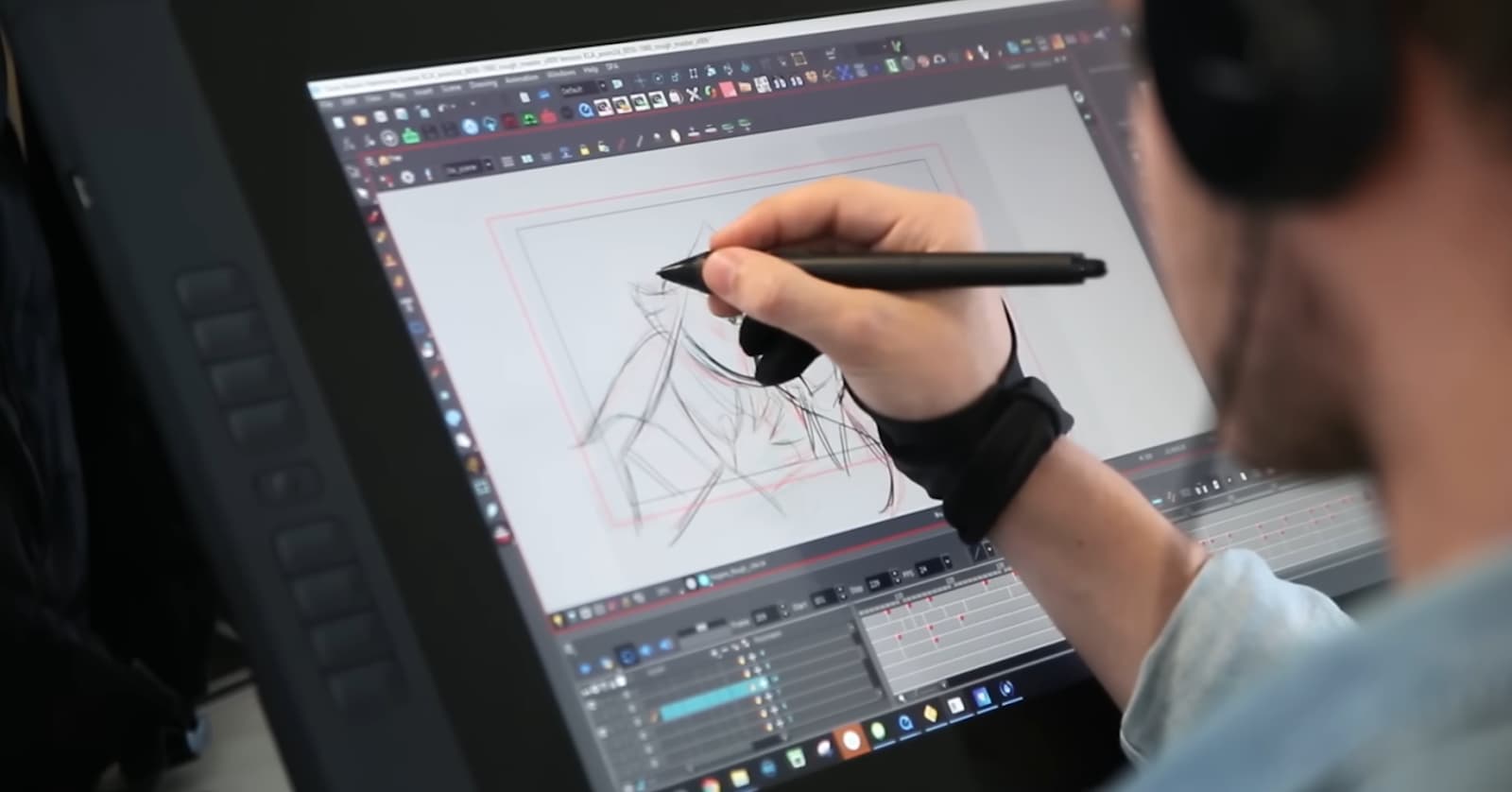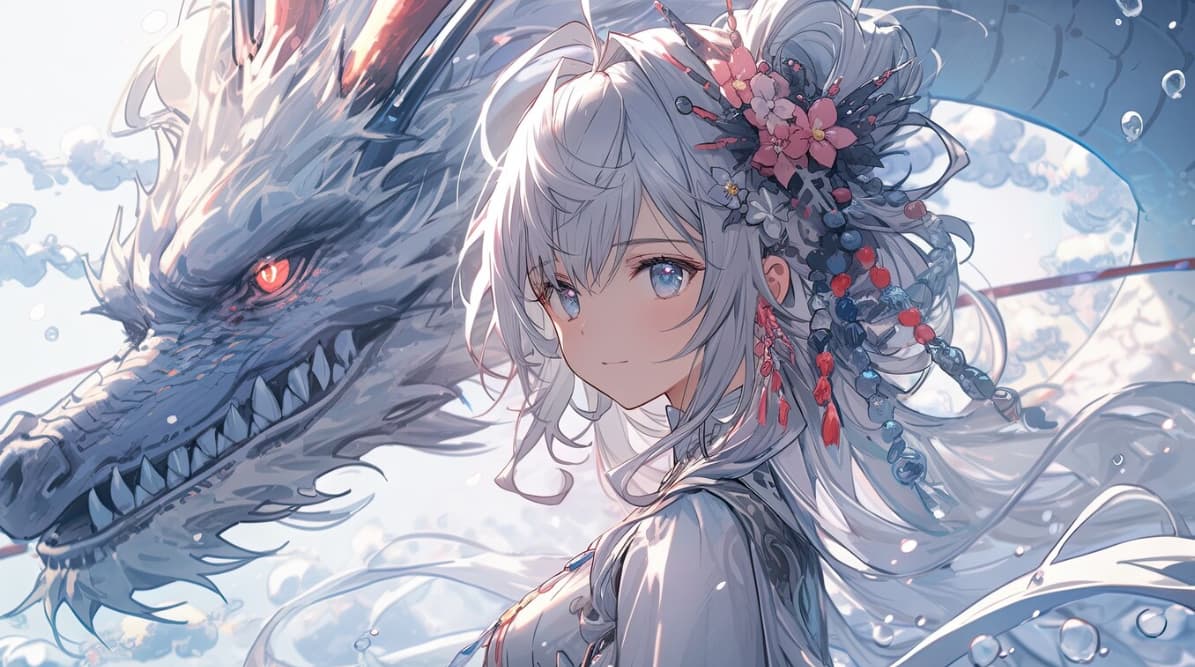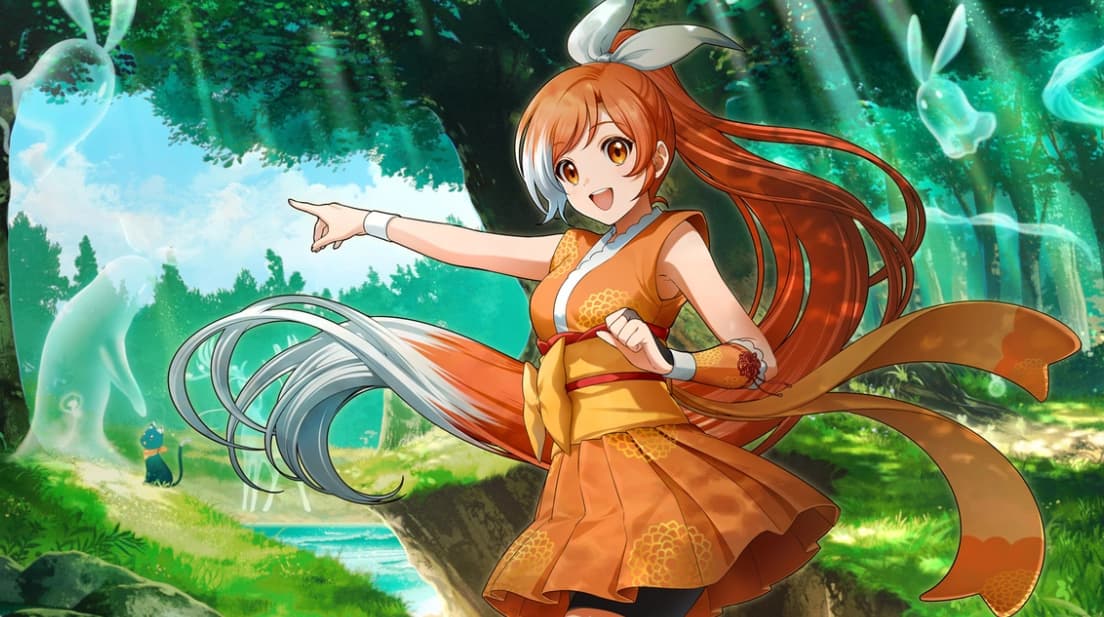In the realm of 2D animated films, be it in the style of American cartoons or Japanese anime, the backdrop holds paramount significance for the overall success of the project. While audiences often focus solely on the narrative or the fluidity of character movements, the intricacies of the meticulously crafted background can easily be overlooked. For those unfamiliar with or underappreciative of the importance of backgrounds in animated narratives, as well as the pivotal role played by background artists in the production process, let us delve deeper into this aspect with insights in the following article!
The Role of Background Artists in Animation Studios
Within the expansive teams of animation studios, Background Artists stand out as one of the key roles, sharing the spotlight with Animators as among the most populous positions. These talented individuals play a crucial role in shaping the visual essence of the animated narratives that captivate audiences worldwide. Their contributions lay the groundwork for the immersive environments in which the animated characters come to life.
It’s important to note that the focus here is on the specialization of Background Artists in the realm of 2D animation. This specific domain demands a unique blend of creativity and technical skill, as these artists craft the scenes that set the stage for storytelling in two-dimensional spaces.
The Multifaceted Role of Background Artists in Animation Production
The essence of a Background Artist’s work in an animation studio can be distilled into the creation of a scene’s setting. This role is multifaceted, requiring a broad set of skills to bring animated worlds to life.
Key responsibilities include:
- Designing spatial and contextual elements of scenes;
- Crafting props and objects that populate the setting;
- Implementing lighting designs to enhance mood and visual appeal;
- Applying drawing skills to materialize the envisioned context.
The depth of involvement in these areas varies with each project and scene, highlighting the adaptability and creativity required in this role.
The Significance of Background Artists in Animation
The creation of background art is not the task of a lone artist but involves a collaborative team effort. This team plays a pivotal role in a 2D animation production, significantly influencing the visual and emotional engagement of the audience. The background sets the tone and atmosphere, directly affecting how stories are perceived and felt by viewers.
Consider the impact of background art on a film’s emotional resonance, using “My Neighbor Totoro” as an example. The vibrant, inviting landscapes contribute to the film’s charm and warmth. A drastic change in background, such as adopting a darker theme, could dramatically alter the narrative’s tone and the audience’s emotional response, illustrating the profound effect background artists have on storytelling in animation.
Essential Skills for Background Artists in Animation Studios
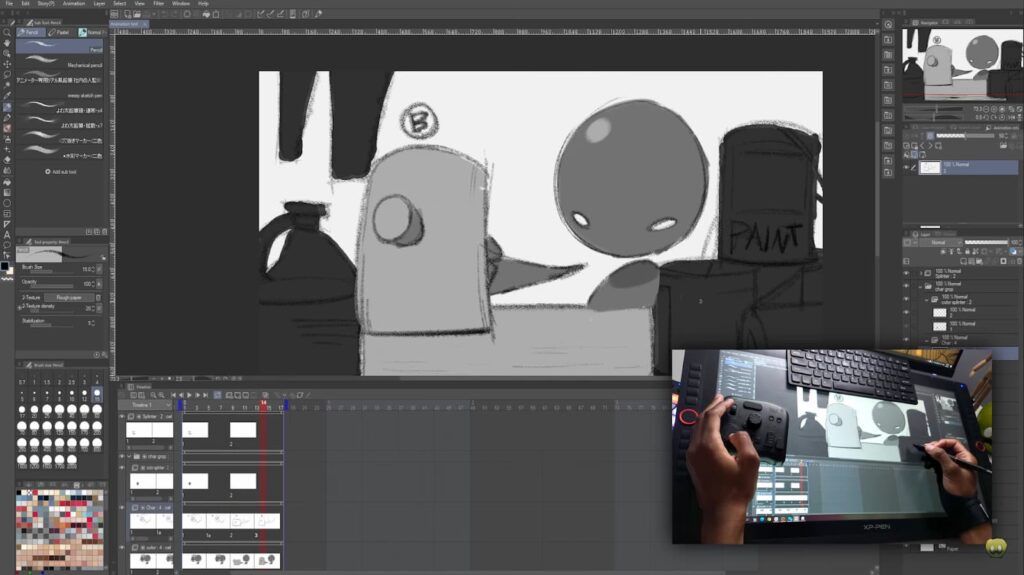
Mastery in Artistic Techniques
While adept hand drawing remains paramount for filmmakers seeking background artists, it’s crucial to acknowledge that proficiency in this skill alone is insufficient. In addition to skilled handwork, a background painter must possess comprehensive knowledge encompassing:
| Skill | Evaluation Criteria |
|---|---|
| Perspective | Ability to create realistic 3D effects on a 2D surface. Assessment through project work. |
| Color Theory | Use of color to enhance storytelling and mood. Reviewed in design and art projects. |
| Design Principles | Cohesiveness, balance, and clarity in visual projects. Evaluated via portfolio review. |
| Aesthetic Sensibility | Demonstrated ability to select and combine elements for maximum impact. Judged through design choices in projects. |
| Versatility | Evidence of successful work in multiple styles or mediums. Assessed by range of work in portfolio. |
This holistic skill set ensures a background artist’s ability to contribute effectively to cinematic storytelling.
Collaborative Abilities in Teamwork
Effective collaboration among members of the background team is essential for maintaining coherence in style and brushwork throughout the film’s scenes. This necessitates a holistic approach where team members work closely together, keeping the larger picture in mind.
For aspiring Background artists, proficiency in teamwork is just as crucial as their painting skills. Beyond individual artistic prowess, the ability to collaborate harmoniously within a team setting is paramount.
Furthermore, strong communication skills play a pivotal role in enabling background artists to grasp the nuances of the art director’s drawing style. This comprehension is vital, particularly during the initial phases of a project, as it ensures alignment with the director’s vision and enhances overall artistic cohesion.
Proficiency in Animation and Cinematography
Understanding animation and cinema is a crucial skill set that distinguishes background artists from illustrators. While both roles involve creating visually captivating imagery, background artists play a pivotal role in contributing to the collective effort of producing an animated film.
Merely producing aesthetically pleasing backgrounds is insufficient; they must seamlessly integrate with the overarching narrative and contribute to storytelling. This requires a deep understanding of visual storytelling techniques.
Proficiency in visual storytelling equips background artists with the ability to dissect the script and the director’s storyboard, enabling them to effectively convey key narrative elements through their background imagery. By aligning their work with the broader cinematic vision, background artists elevate the overall quality and coherence of the animated film.
Preparing Background Artists in Animation Studios
As animated videos continue to dominate the landscape of viral marketing, the demand for cartoon production is on the rise. Consequently, production companies are under pressure to stay abreast of evolving technologies to enhance both productivity and film quality.
In the modern era, advancements in technology have transformed the landscape for artists. Gone are the days of solely relying on hand-drawing on paper or manually assembling scenes through cutting and pasting, unless specifically directed by the filmmaker.
Today, the entire filmmaking process can be seamlessly executed through computers and a plethora of supporting tools. This paradigm shift underscores the importance for background artists in animation studios to adapt and prepare themselves accordingly to leverage these technological advancements effectively.
Enhancing Background Artistry with Digital Drawing Tools
For background painters, the electronic drawing board stands as an essential tool in their arsenal.
Beyond merely enhancing image quality, these boards facilitate seamless editing and manipulation, streamlining the creative process. Moreover, they foster smooth collaboration with other production units, a necessity in today’s predominantly digital animation production pipeline.
In the realm of background artistry, digital drawing tools are akin to a sword to a swordsman, an extension of one’s own craft. Hence, selecting the right drawing board is paramount, ensuring optimal quality and efficiency in your work.
Maximizing Background Artistry with Digital Drawing Software
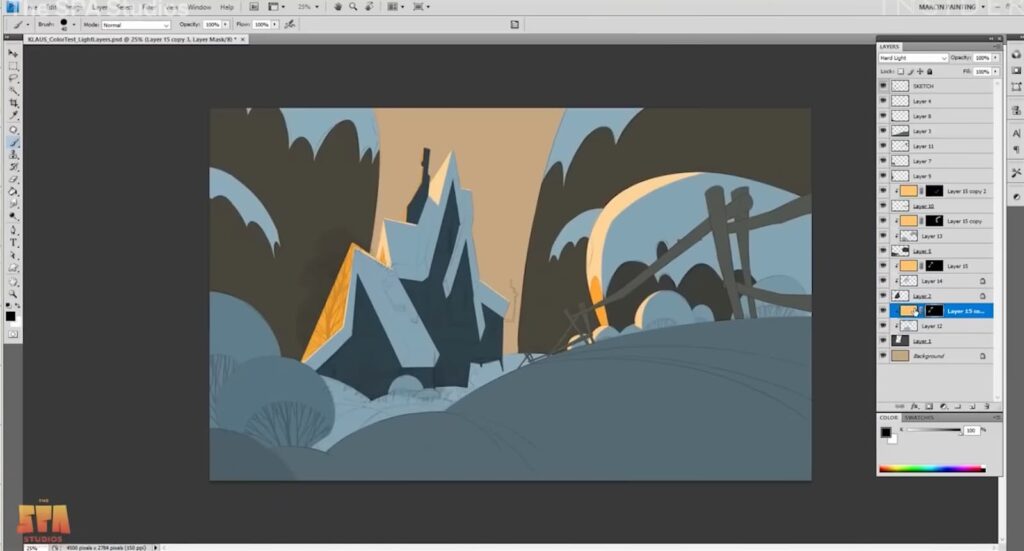
In the realm of background artistry, the electronic drawing board serves as a gateway to a multitude of professional art and graphic software options. Among the plethora of choices available, several popular software platforms stand out:
- Adobe Photoshop;
- Clip Studio Paint;
- PaintTool SAI.
Proficiency in these software applications is paramount for background artists, as it enables them to streamline their production process and expedite the completion of drawings. When selecting the right software, artists must prioritize the optimization of their workflow, ensuring efficiency and quality in their work.
Understanding the foundational steps involved in crafting backgrounds for 2D animated movies may seem like elementary knowledge, often overlooked by background artists. Yet, these seemingly basic steps hold immense importance, particularly in the collaborative process, ensuring coherence and consistency across backgrounds created by different artists. This common language among artists facilitates smoother editing processes, enabling swift adaptations to any changes that may arise during production. Thus, mastering these fundamental steps is indispensable for background artists aiming to contribute effectively to the collective vision of the animated film.
Conclusion
Embarking on a career as a background artist for 2D animation within an Animation Studio presents an enticing prospect, particularly for young individuals with a passion for drawing or cartoon art. The allure of pursuing animation in Vietnam at present is undeniable, drawing the interest of many aspiring artists. However, amidst this excitement, navigating the intricacies of delving deeper into the field can be daunting and overwhelming. It is our sincere hope that this article serves as a beacon of clarity, offering an honest and transparent portrayal of the opportunities and challenges inherent in pursuing a career in 2D animation.
